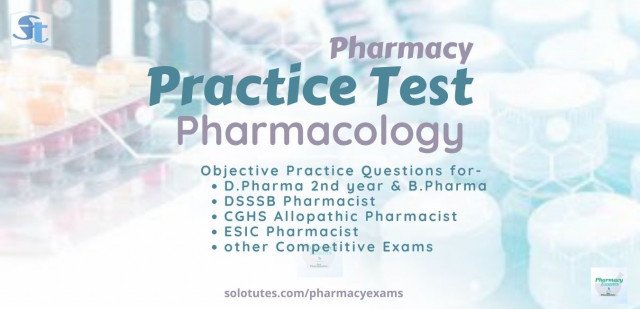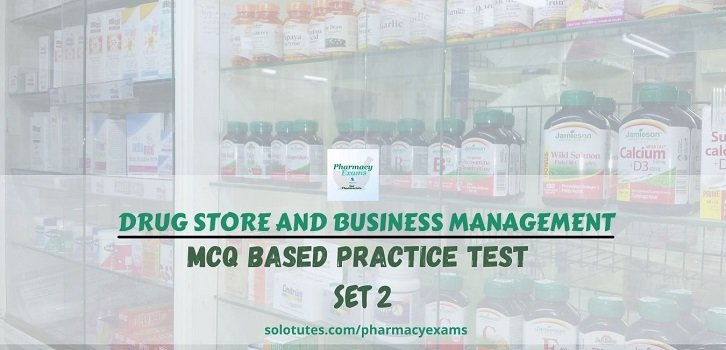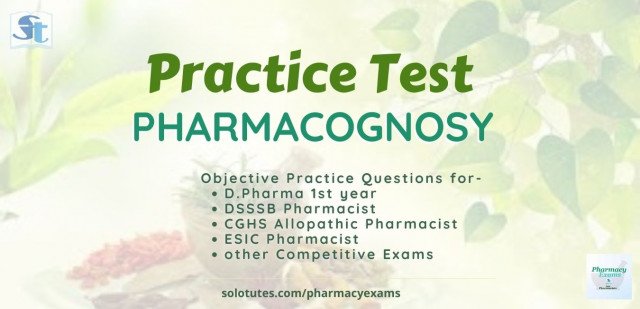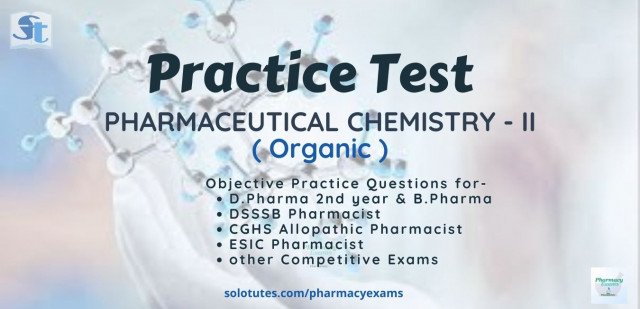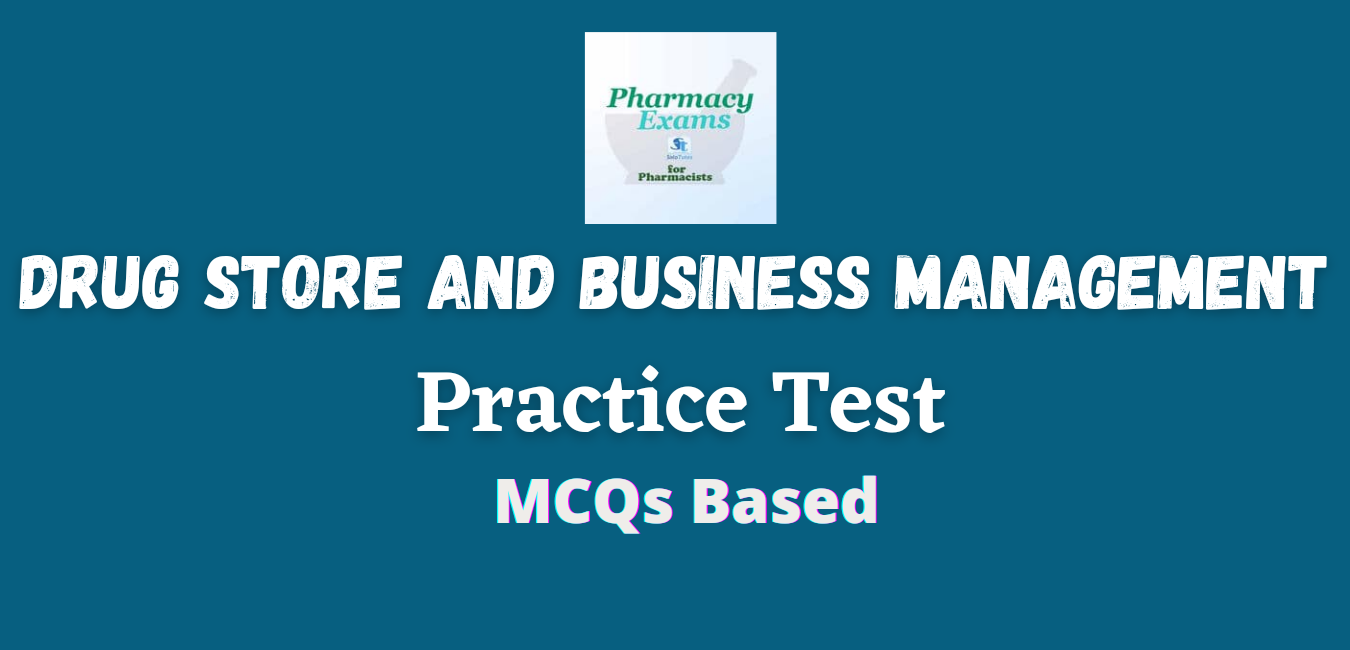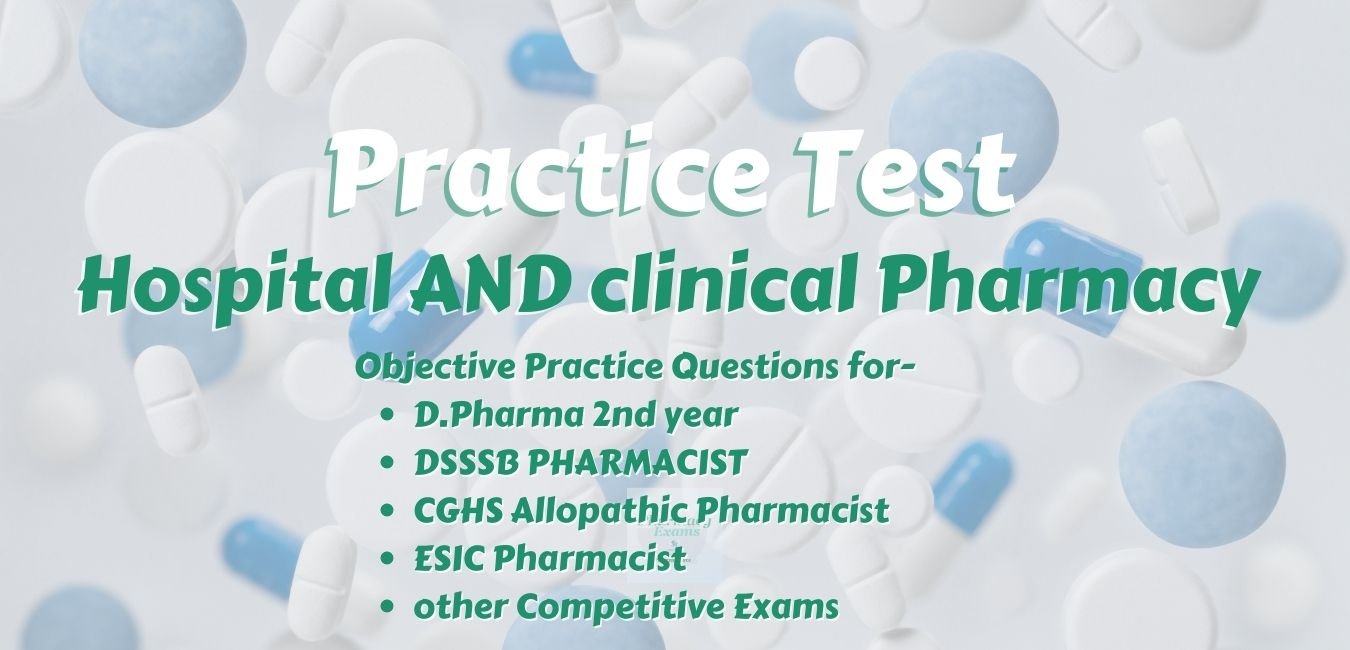D. Pharma
In India, Diploma in Pharmacy is an entry-level tertiary pharmacy credential. It is obtained following two-year of training. Students can enroll in the course after successfully completing higher secondary education in science stream with physics, chemistry and either biology or maths as subjects. source : Wikipedia
Explore in D. Pharma
Chapters All ❱
pharmacy infoline
30 Nov -0001
histamine and antihistamine drugs...
Notes All ❱
![]() solotutes
solotutes
9 Jan 2022
The prescriptions are generally written in English language but Latin words and abbreviations are frequently used in order to save time. So it becomes...
![]() prakash joshi
prakash joshi
16 Apr 2020
Vitamin A, D, E, And K are fat-soluble vitamins. Vitamin A is unsaturated primary alcohol (Retinol). Structurally it is related to the plant pigment c...
pharmacy infoline
12 Jul 2021
Antihistamines are drugs which treat rhinitis and other allergies. Typically people take antihistamines as a cheap , generic, over-the-counter medicin...
![]() prakash joshi
prakash joshi
5 Nov 2020
There are some common drugs used in gynecology. Here is the list of drugs starting from "m" commonly used in obstetrics and gynecological conditio...
![]() prakash joshi
prakash joshi
11 Nov 2020
Endocrine glands are the ductless glands which pour their secretions directly into the bloodstream. secretions are called as Hormones. human end...
![]() solotutes
solotutes
12 Jun 2020
Some of drugs or chemicals are fatal to embryo development. Those drugs and chemical substances which produce deviations and abnormalities in the ...
![]() pharmacy exams
pharmacy exams
22 Mar 2021
Blood is specialized fluid connective tissue, transports nutrition, water and oxygen to various tissues and organs. circulates in closed vessels. sl...
![]() prakash joshi
prakash joshi
11 May 2021
Advantages and disadvantages of tablet in manufacturing, Dosage calculation, unit Dosage form, cost, packaging of Tablets, transportation and dispensi...
![]() pharmacy exams
pharmacy exams
11 May 2021
Tablets are classified according to their route of administration or function. Tablets are Classified as oral ingested Tablets, Tablets for oral cavit...
![]() prakash joshi
prakash joshi
14 May 2021
Pharmaceutical containers are divided according to their utility i.e. well closed container for solid items for transportation, tightly closed conta...
![]() pharmacy exams
pharmacy exams
19 May 2021
Classification of antimicrobials is based on their type of action on microbes kill or reduce the number, spectrum of activity i.e can work on specif...
![]() prakash joshi
prakash joshi
13 Jun 2021
Prodrugs are generally the esters or amides of parent drug, and are useful in improving the solubility, stability, bioavailability of drugs, masking...
One Liners All ❱
competitive antagonism
2 of 12 〉 When both agonist and antagonist binds reversibly on the same site of the receptorcompetitive antagonism
10 more 👇
douche
2 of 14 〉 Viscous liquid preparations used for mouth and throat infectionsThroat paints
12 more 👇
Neuroeffector junction
2 of 3 〉 Nerves that convey impulses from the brain and spinal cord (CNS) to muscles, glands and other effector organsEfferent (Motor)
1 more 👇
QUARENTINE
2 of 12 〉 It is a period between entry of an infectious agent in the body till the onset of symptoms of diseaseINCUBATION PERIOD
10 more 👇
Tuberculosis
2 of 15 〉 The Schick test is done to detect the immunity or susceptibility to _______.Diphtheria
13 more 👇
Presence of fatty meal
2 of 9 〉 Death due to cyanide poisoning results fromInhibition of cytochrome oxidase
7 more 👇
Practice (MCQs) All ❱
1 of 178
Q.1 WHAT IS FALSE NEUROTRANSMITTER
- DOPAMINE
- NOR EPINEPHRINE
- METHYL DOPA
- SEROTONIN
Answer ✔ (c) METHYL DOPA
Pharmacy • D. Pharma • Pharmacist Competitive Exams
2 of 178
Q.2 WEIGHT LOSS IS MAJOR SIDE EFFECT OF WHICH ANTIDIABETIC DRUG?
- PIOGLITAZONE
- METFORMIN
- GLIPIZIDE
- GLIMEPRIDE
Answer ✔ (b) METFORMIN
Pharmacy • D. Pharma • Pharmacist Competitive Exams
3 of 178
Q.3 DRUG USED IN INDUCE LABOUR
- OXYTOCIN
- VASOPRESSIN
- NIFEDIPINE
- SALBUTAMOL
Answer ✔ (a) OXYTOCIN
Pharmacy • D. Pharma • Pharmacist Competitive Exams
4 of 178
Q.4 MAJOR SIDE EFFECT OF CHLORPROMAZINE?
- PALPITATION
- DRYNESS OF MOUTH
- PARKINSONISM
- DIABETES
Answer ✔ (c) PARKINSONISM
Pharmacy • D. Pharma • Pharmacist Competitive Exams
5 of 178
Q.5 DRUG USED IN ANAPHYLATIC SHOCK?
- EPINEPHRINE
- ADRENALINE
- BOTH A AND B
- ATROPINE
Answer ✔ (c) BOTH A AND B
Pharmacy • D. Pharma • Pharmacist Competitive Exams
6 of 178
Q.1 When businesses organisations owned and controlled by a single person it is…
- Sole proprietorship
- Partnership firms
- Co operative society
- All of them
Answer ✔ (a) Sole proprietorship
Diploma • D. Pharma • Drug Store and Business Management • Diploma in Pharmacy
7 of 178
Q.2 .. . Encourage self-employment.
- Sole proprietorship
- Co operative society
- Partnership firms
- All of them
Answer ✔ (a) Sole proprietorship
Diploma • D. Pharma • Drug Store and Business Management • Diploma in Pharmacy
8 of 178
Q.3 The highest secrecy can be maintained in
- Sole proprietorship
- Co operative society
- Partnership firms
- All of them
Answer ✔ (a) Sole proprietorship
Diploma • D. Pharma • Drug Store and Business Management • Diploma in Pharmacy
9 of 178
Q.4 Limited scope of expansion is the disadvantage of…
- Sole proprietorship
- Partnership firms
- Co operative society
- All of them
Answer ✔ (a) Sole proprietorship
Diploma • D. Pharma • Drug Store and Business Management • Diploma in Pharmacy
10 of 178
Q.5 The oldest form of business organisation is….
- Partnership
- Joint hindu family
- Sole Proprietorship
- All of them
Answer ✔ (a) Partnership
Diploma • D. Pharma • Drug Store and Business Management • Diploma in Pharmacy
11 of 178
Q.6 In which of the following forms of business organization, registration is compulsory…
- Partnership firm
- Sole proprietorship
- Joint-stock company
- All of them
Answer ✔ (b) Sole proprietorship
Diploma • D. Pharma • Drug Store and Business Management • Diploma in Pharmacy
12 of 178
Directions:
Q.1 Substances in which medicament is either dissolved or suspended are… …
- Elixirs
- Vehicles
- Emulsions
- Mixtures
Answer ✔ (b) Vehicles
D. Pharma • D. Pharma • D. Pharma • Hospital and Clinical Pharmacy • Hospital and Clinical Pharmacy • Hospital and Clinical Pharmacy • Diploma in Pharmacy
13 of 178
Q.2 Alcoholic solutions of volatile substances or medicaments are…
- Syrups
- Spirits
- Injections
- Mixtures
Answer ✔ (b) Spirits
D. Pharma • D. Pharma • D. Pharma • Hospital and Clinical Pharmacy • Hospital and Clinical Pharmacy • Hospital and Clinical Pharmacy • Diploma in Pharmacy
14 of 178
Q.3 Alcoholic or hydroalcoholic preparations of vegetable drugs are….
- Syrups
- Emulsions
- Mixtures
- Tinctures
Answer ✔ (d) Tinctures
Explanation: A tincture is typically an extract of plant or animal material dissolved in ethanol. Solvent concentrations of 25–60% are common, but may run as high as 90%. In chemistry, a tincture is a solution that has ethanol as its solvent
D. Pharma • D. Pharma • D. Pharma • Hospital and Clinical Pharmacy • Hospital and Clinical Pharmacy • Hospital and Clinical Pharmacy • Diploma in Pharmacy
15 of 178
Q.4 Vaginal suppositories are also known as …
- Gels
- Liniments
- Poultice
- Pessaries
Answer ✔ (d) Pessaries
Explanation: A pessary is a prosthetic device inserted into the vagina for structural and pharmaceutical purposes. It is most commonly used to treat stress urinary incontinence to stop urinary leakage, and pelvic organ prolapse to maintain the location of organs in the pelvic region
D. Pharma • D. Pharma • D. Pharma • Hospital and Clinical Pharmacy • Hospital and Clinical Pharmacy • Hospital and Clinical Pharmacy • Diploma in Pharmacy
16 of 178
Q.5 A book published by the government called as official books to prescribe the standards of purity and potency of the drugs is called… ..
- Pharmacopoeia
- Prescribed books
- Prescription
- Reference book
Answer ✔ (a) Pharmacopoeia
Explanation: A pharmacopoeia, pharmacopeia, or pharmacopoea, in its modern technical sense, is a book containing directions for the identification of compound medicines, and published by the authority of a government or a medical or pharmaceutical society. Descriptions of preparations are called monographs.
D. Pharma • D. Pharma • D. Pharma • Hospital and Clinical Pharmacy • Hospital and Clinical Pharmacy • Hospital and Clinical Pharmacy • Diploma in Pharmacy
17 of 178
Q.6 Protozoal infection is also known as… . .
- Amoebiasis
- Helminthiasis
- Antiemetics
- None of them
Answer ✔ (a) Amoebiasis
Explanation: A parasitic infection of the colon with the amoeba Entamoeba histolytica. Amoebiasis infection is most common in tropical areas with untreated water. It spreads through drinking or eating uncooked food, such as fruit, that may have been washed in contaminated local water.
D. Pharma • D. Pharma • D. Pharma • Hospital and Clinical Pharmacy • Hospital and Clinical Pharmacy • Hospital and Clinical Pharmacy • Diploma in Pharmacy
18 of 178
Q.7 Worm infestation is also called ....
- Amoebiasis
- Helminthiasis
- Antiemetics
- None of them
Answer ✔ (a) Amoebiasis
Explanation: Helminthiasis, also known as worm infection, is any macroparasitic disease of humans and other animals in which a part of the body is infected with parasitic worms, known as helminths. There are numerous species of these parasites, which are broadly classified into tapeworms, flukes, and roundworms.
D. Pharma • D. Pharma • D. Pharma • Hospital and Clinical Pharmacy • Hospital and Clinical Pharmacy • Hospital and Clinical Pharmacy • Diploma in Pharmacy
19 of 178
Q.8 Drugs used in treatment of worm infestation are called…
- Local anaesthetic
- Analgesics
- Anthelmintics
- Antiemetics
Answer ✔ (c) Anthelmintics
Explanation: Anthelmintics or antihelminthics are a group of antiparasitic drugs that expel parasitic worms and other internal parasites from the body by either stunning or killing them and without causing significant damage to the host. They may also be called vermifuges or vermicides
D. Pharma • D. Pharma • D. Pharma • Hospital and Clinical Pharmacy • Hospital and Clinical Pharmacy • Hospital and Clinical Pharmacy • Diploma in Pharmacy
20 of 178
Q.9 Substances which anesthetize the restricted area without making subject unconscious…
- Local anaesthetic
- Antiemetics
- General anaesthetic
- Analgesics
Answer ✔ (a) Local anaesthetic
Explanation: A local anesthetic is a medication that causes absence of pain sensation. In the context of surgery, a local anesthetic creates an absence of pain in a specific location of the body without a loss of consciousness, as opposed to a general anesthetic
D. Pharma • D. Pharma • D. Pharma • Hospital and Clinical Pharmacy • Hospital and Clinical Pharmacy • Hospital and Clinical Pharmacy • Diploma in Pharmacy
21 of 178
Q.10 Drugs that cause evacuation of bowels or defecation are… . .
- Purgatives
- Antiemetics
- Tranquilizers
- Adsobent
Answer ✔ (a) Purgatives
Explanation: Laxatives, purgatives, or aperients are substances that loosen stools and increase bowel movements. They are used to treat and prevent constipation. Laxatives vary as to how they work and the side effects they may have
D. Pharma • D. Pharma • D. Pharma • Hospital and Clinical Pharmacy • Hospital and Clinical Pharmacy • Hospital and Clinical Pharmacy • Diploma in Pharmacy
22 of 178
Directions:
Q.1 Substances in which medicament is either dissolved or suspended are… …
- Elixirs
- Vehicles
- Emulsions
- Mixtures
Answer ✔ (b) Vehicles
D. Pharma • D. Pharma • D. Pharma • Hospital and Clinical Pharmacy • Hospital and Clinical Pharmacy • Hospital and Clinical Pharmacy • Diploma in Pharmacy
23 of 178
Q.2 Alcoholic solutions of volatile substances or medicaments are…
- Syrups
- Spirits
- Injections
- Mixtures
Answer ✔ (b) Spirits
D. Pharma • D. Pharma • D. Pharma • Hospital and Clinical Pharmacy • Hospital and Clinical Pharmacy • Hospital and Clinical Pharmacy • Diploma in Pharmacy
24 of 178
Q.3 Alcoholic or hydroalcoholic preparations of vegetable drugs are….
- Syrups
- Emulsions
- Mixtures
- Tinctures
Answer ✔ (d) Tinctures
Explanation: A tincture is typically an extract of plant or animal material dissolved in ethanol. Solvent concentrations of 25–60% are common, but may run as high as 90%. In chemistry, a tincture is a solution that has ethanol as its solvent
D. Pharma • D. Pharma • D. Pharma • Hospital and Clinical Pharmacy • Hospital and Clinical Pharmacy • Hospital and Clinical Pharmacy • Diploma in Pharmacy
25 of 178
Q.4 Vaginal suppositories are also known as …
- Gels
- Liniments
- Poultice
- Pessaries
Answer ✔ (d) Pessaries
Explanation: A pessary is a prosthetic device inserted into the vagina for structural and pharmaceutical purposes. It is most commonly used to treat stress urinary incontinence to stop urinary leakage, and pelvic organ prolapse to maintain the location of organs in the pelvic region
D. Pharma • D. Pharma • D. Pharma • Hospital and Clinical Pharmacy • Hospital and Clinical Pharmacy • Hospital and Clinical Pharmacy • Diploma in Pharmacy
26 of 178
Q.5 A book published by the government called as official books to prescribe the standards of purity and potency of the drugs is called… ..
- Pharmacopoeia
- Prescribed books
- Prescription
- Reference book
Answer ✔ (a) Pharmacopoeia
Explanation: A pharmacopoeia, pharmacopeia, or pharmacopoea, in its modern technical sense, is a book containing directions for the identification of compound medicines, and published by the authority of a government or a medical or pharmaceutical society. Descriptions of preparations are called monographs.
D. Pharma • D. Pharma • D. Pharma • Hospital and Clinical Pharmacy • Hospital and Clinical Pharmacy • Hospital and Clinical Pharmacy • Diploma in Pharmacy
27 of 178
Q.6 Protozoal infection is also known as… . .
- Amoebiasis
- Helminthiasis
- Antiemetics
- None of them
Answer ✔ (a) Amoebiasis
Explanation: A parasitic infection of the colon with the amoeba Entamoeba histolytica. Amoebiasis infection is most common in tropical areas with untreated water. It spreads through drinking or eating uncooked food, such as fruit, that may have been washed in contaminated local water.
D. Pharma • D. Pharma • D. Pharma • Hospital and Clinical Pharmacy • Hospital and Clinical Pharmacy • Hospital and Clinical Pharmacy • Diploma in Pharmacy
28 of 178
Q.7 Worm infestation is also called ....
- Amoebiasis
- Helminthiasis
- Antiemetics
- None of them
Answer ✔ (a) Amoebiasis
Explanation: Helminthiasis, also known as worm infection, is any macroparasitic disease of humans and other animals in which a part of the body is infected with parasitic worms, known as helminths. There are numerous species of these parasites, which are broadly classified into tapeworms, flukes, and roundworms.
D. Pharma • D. Pharma • D. Pharma • Hospital and Clinical Pharmacy • Hospital and Clinical Pharmacy • Hospital and Clinical Pharmacy • Diploma in Pharmacy
29 of 178
Q.8 Drugs used in treatment of worm infestation are called…
- Local anaesthetic
- Analgesics
- Anthelmintics
- Antiemetics
Answer ✔ (c) Anthelmintics
Explanation: Anthelmintics or antihelminthics are a group of antiparasitic drugs that expel parasitic worms and other internal parasites from the body by either stunning or killing them and without causing significant damage to the host. They may also be called vermifuges or vermicides
D. Pharma • D. Pharma • D. Pharma • Hospital and Clinical Pharmacy • Hospital and Clinical Pharmacy • Hospital and Clinical Pharmacy • Diploma in Pharmacy
30 of 178
Q.9 Substances which anesthetize the restricted area without making subject unconscious…
- Local anaesthetic
- Antiemetics
- General anaesthetic
- Analgesics
Answer ✔ (a) Local anaesthetic
Explanation: A local anesthetic is a medication that causes absence of pain sensation. In the context of surgery, a local anesthetic creates an absence of pain in a specific location of the body without a loss of consciousness, as opposed to a general anesthetic
D. Pharma • D. Pharma • D. Pharma • Hospital and Clinical Pharmacy • Hospital and Clinical Pharmacy • Hospital and Clinical Pharmacy • Diploma in Pharmacy
31 of 178
Q.10 Drugs that cause evacuation of bowels or defecation are… . .
- Purgatives
- Antiemetics
- Tranquilizers
- Adsobent
Answer ✔ (a) Purgatives
Explanation: Laxatives, purgatives, or aperients are substances that loosen stools and increase bowel movements. They are used to treat and prevent constipation. Laxatives vary as to how they work and the side effects they may have
D. Pharma • D. Pharma • D. Pharma • Hospital and Clinical Pharmacy • Hospital and Clinical Pharmacy • Hospital and Clinical Pharmacy • Diploma in Pharmacy
32 of 178
Directions:
Q.1 Substances in which medicament is either dissolved or suspended are… …
- Elixirs
- Vehicles
- Emulsions
- Mixtures
Answer ✔ (b) Vehicles
D. Pharma • D. Pharma • D. Pharma • Hospital and Clinical Pharmacy • Hospital and Clinical Pharmacy • Hospital and Clinical Pharmacy • Diploma in Pharmacy
33 of 178
Q.2 Alcoholic solutions of volatile substances or medicaments are…
- Syrups
- Spirits
- Injections
- Mixtures
Answer ✔ (b) Spirits
D. Pharma • D. Pharma • D. Pharma • Hospital and Clinical Pharmacy • Hospital and Clinical Pharmacy • Hospital and Clinical Pharmacy • Diploma in Pharmacy
34 of 178
Q.3 Alcoholic or hydroalcoholic preparations of vegetable drugs are….
- Syrups
- Emulsions
- Mixtures
- Tinctures
Answer ✔ (d) Tinctures
Explanation: A tincture is typically an extract of plant or animal material dissolved in ethanol. Solvent concentrations of 25–60% are common, but may run as high as 90%. In chemistry, a tincture is a solution that has ethanol as its solvent
D. Pharma • D. Pharma • D. Pharma • Hospital and Clinical Pharmacy • Hospital and Clinical Pharmacy • Hospital and Clinical Pharmacy • Diploma in Pharmacy
35 of 178
Q.4 Vaginal suppositories are also known as …
- Gels
- Liniments
- Poultice
- Pessaries
Answer ✔ (d) Pessaries
Explanation: A pessary is a prosthetic device inserted into the vagina for structural and pharmaceutical purposes. It is most commonly used to treat stress urinary incontinence to stop urinary leakage, and pelvic organ prolapse to maintain the location of organs in the pelvic region
D. Pharma • D. Pharma • D. Pharma • Hospital and Clinical Pharmacy • Hospital and Clinical Pharmacy • Hospital and Clinical Pharmacy • Diploma in Pharmacy
36 of 178
Q.5 A book published by the government called as official books to prescribe the standards of purity and potency of the drugs is called… ..
- Pharmacopoeia
- Prescribed books
- Prescription
- Reference book
Answer ✔ (a) Pharmacopoeia
Explanation: A pharmacopoeia, pharmacopeia, or pharmacopoea, in its modern technical sense, is a book containing directions for the identification of compound medicines, and published by the authority of a government or a medical or pharmaceutical society. Descriptions of preparations are called monographs.
D. Pharma • D. Pharma • D. Pharma • Hospital and Clinical Pharmacy • Hospital and Clinical Pharmacy • Hospital and Clinical Pharmacy • Diploma in Pharmacy
37 of 178
Q.6 Protozoal infection is also known as… . .
- Amoebiasis
- Helminthiasis
- Antiemetics
- None of them
Answer ✔ (a) Amoebiasis
Explanation: A parasitic infection of the colon with the amoeba Entamoeba histolytica. Amoebiasis infection is most common in tropical areas with untreated water. It spreads through drinking or eating uncooked food, such as fruit, that may have been washed in contaminated local water.
D. Pharma • D. Pharma • D. Pharma • Hospital and Clinical Pharmacy • Hospital and Clinical Pharmacy • Hospital and Clinical Pharmacy • Diploma in Pharmacy
38 of 178
Q.7 Worm infestation is also called ....
- Amoebiasis
- Helminthiasis
- Antiemetics
- None of them
Answer ✔ (a) Amoebiasis
Explanation: Helminthiasis, also known as worm infection, is any macroparasitic disease of humans and other animals in which a part of the body is infected with parasitic worms, known as helminths. There are numerous species of these parasites, which are broadly classified into tapeworms, flukes, and roundworms.
D. Pharma • D. Pharma • D. Pharma • Hospital and Clinical Pharmacy • Hospital and Clinical Pharmacy • Hospital and Clinical Pharmacy • Diploma in Pharmacy
39 of 178
Q.8 Drugs used in treatment of worm infestation are called…
- Local anaesthetic
- Analgesics
- Anthelmintics
- Antiemetics
Answer ✔ (c) Anthelmintics
Explanation: Anthelmintics or antihelminthics are a group of antiparasitic drugs that expel parasitic worms and other internal parasites from the body by either stunning or killing them and without causing significant damage to the host. They may also be called vermifuges or vermicides
D. Pharma • D. Pharma • D. Pharma • Hospital and Clinical Pharmacy • Hospital and Clinical Pharmacy • Hospital and Clinical Pharmacy • Diploma in Pharmacy
40 of 178
Q.9 Substances which anesthetize the restricted area without making subject unconscious…
- Local anaesthetic
- Antiemetics
- General anaesthetic
- Analgesics
Answer ✔ (a) Local anaesthetic
Explanation: A local anesthetic is a medication that causes absence of pain sensation. In the context of surgery, a local anesthetic creates an absence of pain in a specific location of the body without a loss of consciousness, as opposed to a general anesthetic
D. Pharma • D. Pharma • D. Pharma • Hospital and Clinical Pharmacy • Hospital and Clinical Pharmacy • Hospital and Clinical Pharmacy • Diploma in Pharmacy
41 of 178
Q.10 Drugs that cause evacuation of bowels or defecation are… . .
- Purgatives
- Antiemetics
- Tranquilizers
- Adsobent
Answer ✔ (a) Purgatives
Explanation: Laxatives, purgatives, or aperients are substances that loosen stools and increase bowel movements. They are used to treat and prevent constipation. Laxatives vary as to how they work and the side effects they may have
D. Pharma • D. Pharma • D. Pharma • Hospital and Clinical Pharmacy • Hospital and Clinical Pharmacy • Hospital and Clinical Pharmacy • Diploma in Pharmacy
42 of 178
Q.1 An institution of community health is…
- Hospital
- Industries
- Educational institutions
- None of them
Answer ✔ (a) Hospital
D. Pharma • Hospital and Clinical Pharmacy • Diploma in Pharmacy
43 of 178
Q.2 Functions of modern hospitals include…
- Doctors & nurses receive training
- Lowers the incidence of disease
- Raises the quality of care & standards of medical practice
- All of them
Answer ✔ (d) All of them
D. Pharma • Hospital and Clinical Pharmacy • Diploma in Pharmacy
44 of 178
Q.3 DGHS stands for…. . .
- Director General of health services
- Director General of habitual services
- Director General of health society
- Decorum General of health services
Answer ✔ (a) Director General of health services
Explanation: The Directorate General of Health Services (Dte.GHS) is a repository of technical knowledge concerning Public Health, Medical Education and Health Care. It is an attached organisation of the Ministry of Health & Family Welfare. The Dte.GHS is headed by Director General of Health Services (DGHS), an officer of Central Health Services, who renders technical advice on all medical and public health matters to Ministry of Health and Family Welfare
D. Pharma • Hospital and Clinical Pharmacy • Diploma in Pharmacy
45 of 178
Q.4 At the central government level, the health delivery system in the Constitution of India is…
- Union ministry of health & family welfare
- Ministry of health
- DGHS
- Health ministry welfare
Answer ✔ (a) Union ministry of health & family welfare
Explanation: The Minister of Health and Family Welfare holds cabinet rank as a member of the Council of Ministers
D. Pharma • Hospital and Clinical Pharmacy • Diploma in Pharmacy
46 of 178
Q.5 DHO stands for …
- District health officer
- District hazard officer
- District medical offence
- District medical officer
Answer ✔ (a) District health officer
D. Pharma • Hospital and Clinical Pharmacy • Diploma in Pharmacy
47 of 178
Q.6 The consumption of a drug apart from medical needs or in unnecessary quantities is…
- Drug misuse
- Drug habituation
- Drug abuse
- Drug addiction
Answer ✔ (c) Drug abuse
Explanation: Excessive use of psychoactive drugs, such as alcohol, pain medications or illegal drugs. It can lead to physical, social or emotional harm.
D. Pharma • Hospital and Clinical Pharmacy • Diploma in Pharmacy
48 of 178
Q.7 The use of drugs for purposes for which they are unsuited even their appropriate use but in improper dosage is … .
- Drug misuse
- Drug abuse
- Drug addiction
- Drug habituation
Answer ✔ (a) Drug misuse
D. Pharma • Hospital and Clinical Pharmacy • Diploma in Pharmacy
49 of 178
Q.1 Compared to subcutaneous injection, the intramus- cular injection of drugs:
- Is more painful
- Produces faster response
- Is unsuitable for depot preparations
- Carries greater risk of anaphylactic reaction
Answer ✔ (b) Produces faster response
Pharmacology • D. Pharma • B. Pharma • Bachelor of Pharmacy • Diploma in Pharmacy
50 of 178
Q.2 The majority of drugs cross biological membranes primarily by
- Passive diffusion
- Facilitated diffusion
- Active transport
- Pinocytosis
Answer ✔ (a) Passive diffusion
Pharmacology • D. Pharma • B. Pharma • Bachelor of Pharmacy • Diploma in Pharmacy
51 of 178
Directions:
Q.3 Which of the following drugs is most likely to be absorbed from the stomach
- Hyoscine hydrobromide
- Morphine sulfate
- Diclofenac sodium
- Quinine dihydrochloride
Answer ✔ (c) Diclofenac sodium
Pharmacology • D. Pharma • B. Pharma • Bachelor of Pharmacy • Diploma in Pharmacy
52 of 178
Directions:
Q.4 The most important factor governing absorption of a drug from intact skin is
- Nature of the base used in the formulation
- Lipid solubility of the drug
- Molecular weight of the drug
- Site of application
Answer ✔ (b) Lipid solubility of the drug
Pharmacology • D. Pharma • B. Pharma • Bachelor of Pharmacy • Diploma in Pharmacy
53 of 178
Q.5 Bioavailability differences among oral formulations of a drug are most likely to occur if the drug
- Undergoes little first-pass metabolism
- Is incompletely absorbed
- Is freely water soluble
- Is completely absorbed
Answer ✔ (b) Is incompletely absorbed
Pharmacology • D. Pharma • B. Pharma • Bachelor of Pharmacy • Diploma in Pharmacy
54 of 178
Q.6 Marked redistribution is a feature of
- Highly plasma protein bound drugs
- Depot preparations
- Highly lipid soluble drugs
- Poorly lipid soluble drugs
Answer ✔ (c) Highly lipid soluble drugs
Pharmacology • D. Pharma • B. Pharma • Bachelor of Pharmacy • Diploma in Pharmacy
55 of 178
Q.7 High plasma protein binding
- Increases volume of distribution of the drug
- Generally makes the drug long acting
- Facilitates glomerular filtration of the drug
- Minimises drug interactions
Answer ✔ (b) Generally makes the drug long acting
Pharmacology • D. Pharma • B. Pharma • Bachelor of Pharmacy • Diploma in Pharmacy
56 of 178
Q.8 Which of the following is a prodrug
- Enalapril
- Menapril
- Thiazine
- Penicillin
Answer ✔ (a) Enalapril
Pharmacology • D. Pharma • B. Pharma • Bachelor of Pharmacy • Diploma in Pharmacy
57 of 178
Q.9 Microsomal enzyme induction can be a cause of
- Tolerance
- Physical dependence
- Psychological dependence
- Idiosyncrasy
Answer ✔ (a) Tolerance
Pharmacology • D. Pharma • B. Pharma • Bachelor of Pharmacy • Diploma in Pharmacy
58 of 178
Q.10 Glomerular filtration of a drug is affected by its
- Plasma protein binding
- Lipid solubility
- Degree of ionization
- Rate of tubular secretion
Answer ✔ (a) Plasma protein binding
Pharmacology • D. Pharma • B. Pharma • Bachelor of Pharmacy • Diploma in Pharmacy
59 of 178
Directions:
Q.1 Which of the following organs is innervated only by parasympathetic nerves
- Sweat glands
- Ciliary muscle
- Iris muscles
- Splenic capsule
Answer ✔ (b) Ciliary muscle
Pharmacology • D. Pharma • B. Pharma • Bachelor of Pharmacy • Diploma in Pharmacy
60 of 178
Directions: .
Q.2 The following cotransmitter is most probably involved in mediating nonadrenergic-noncholinergic (NANC) relaxation of the gut
- Nitric oxide (NO)
- Adenosine
- Neuropeptide Y (NPY)
- Kallidin
Answer ✔ (d) Kallidin
Pharmacology • D. Pharma • B. Pharma • Bachelor of Pharmacy • Diploma in Pharmacy
61 of 178
Q.3 The major postjunctional cholinergic receptor is of the muscarinic type at the following site
- Neuromuscular junction
- Postganglionic parasympathetic
- Adrenal medulla
- Autonomic ganglia
Answer ✔ (b) Postganglionic parasympathetic
Pharmacology • D. Pharma • B. Pharma • Bachelor of Pharmacy • Diploma in Pharmacy
62 of 178
Q.4 The choline ester resistant to both true and pseudo- cholinesterase is
- Bethanechol
- Butyrylcholine
- Methacholine
- Benzoylcholine
Answer ✔ (a) Bethanechol
Pharmacology • D. Pharma • B. Pharma • Bachelor of Pharmacy • Diploma in Pharmacy
63 of 178
Q.5 The smooth muscle structure that is relaxed by choli- nergic drugs is
- Colon
- Gastric fundus
- Bladder trigone
- Major bronchi
Answer ✔ (c) Bladder trigone
Pharmacology • D. Pharma • B. Pharma • Bachelor of Pharmacy • Diploma in Pharmacy
64 of 178
Q.6 Pilocarpine is used for
- Glaucoma
- Paralytic ileus
- Urinary retention
- Infection
Answer ✔ (a) Glaucoma
Pharmacology • D. Pharma • B. Pharma • Bachelor of Pharmacy • Diploma in Pharmacy
65 of 178
Q.7 The following inhibitor binds only to the ani-onic site of the cholinesterase enzyme
- Neostigmine
- Edrophonium
- Physostigmine
- Dyflos
Answer ✔ (b) Edrophonium
Pharmacology • D. Pharma • B. Pharma • Bachelor of Pharmacy • Diploma in Pharmacy
66 of 178
Q.8 Reactivation of cholinesterase enzyme occurs on hydrolysis of the inhibitor by the same enzyme mole- cule in case of the following anticholinesterase
- Edrophonium
- Dyflos
- Tacrine
- Neostigmine
Answer ✔ (d) Neostigmine
Pharmacology • D. Pharma • B. Pharma • Bachelor of Pharmacy • Diploma in Pharmacy
67 of 178
Q.9 Pyridostigmine differs from neostigmine in that
- It produces less muscarinic side effects
- It is more potent orally
- It is longer acting
- It does not have any direct action on NM receptor
Answer ✔ (c) It is longer acting
Pharmacology • D. Pharma • B. Pharma • Bachelor of Pharmacy • Diploma in Pharmacy
68 of 178
Q.10 The site of action of miotics for therapeutic effect in angle closure glaucoma is
- Canal of Schlemm
- Ciliary body
- Ciliary muscle
- Sphincter pupillae muscle
Answer ✔ (d) Sphincter pupillae muscle
Pharmacology • D. Pharma • B. Pharma • Bachelor of Pharmacy • Diploma in Pharmacy
69 of 178
Q.1 Labetalol differs from propranolol in that
- It has additional α1 blocking property
- It is a selective βS1 blocker
- It does not undergo first pass metabolism
- All of the above
Answer ✔ (a) It has additional α1 blocking property
Pharmacology • Pharmacology • Pharmacology • Post Graduation • D. Pharma • B. Pharma • Diploma in Pharmacy
70 of 178
Q.2 Select the β-adrenergic blocker that has additional β1blocking, vasodilator and antioxidant properties
- Celiprolol
- Metoprolol
- Carvedilol
- Acebutolol
Answer ✔ (c) Carvedilol
Pharmacology • Pharmacology • Pharmacology • Post Graduation • D. Pharma • B. Pharma • Diploma in Pharmacy
71 of 178
Q.3 Select the β adrenergic blocker that is primarily eliminated unchanged by renal excretion
- Atenolol
- Carbinol
- Ethanol
- Dompirol
Answer ✔ (a) Atenolol
Pharmacology • Pharmacology • Pharmacology • Post Graduation • D. Pharma • B. Pharma • Diploma in Pharmacy
72 of 178
Q.4 Select the ultrashort acting cardioselective β adre- nergic blocker
- Carbinol
- Ethanol
- Esmolol
- Propalol
Answer ✔ (c) Esmolol
Pharmacology • Pharmacology • Pharmacology • Post Graduation • D. Pharma • B. Pharma • Diploma in Pharmacy
73 of 178
Q.5 The following disease is worsened by propranolol
- Raynaud’s disease
- Infection
- Heart attack
- Epilepsy
Answer ✔ (a) Raynaud’s disease
Pharmacology • Pharmacology • Pharmacology • Post Graduation • D. Pharma • B. Pharma • Diploma in Pharmacy
74 of 178
Q.6 Select the drug which is administered orally for erectile dysfunction in men
- Albendazole
- Mebendazole
- Cocaine
- Sildenafil
Answer ✔ (d) Sildenafil
Pharmacology • Pharmacology • Pharmacology • Post Graduation • D. Pharma • B. Pharma • Diploma in Pharmacy
75 of 178
Q.7 Which of the following is a selective α1A receptor bloc- ker that affords symptomatic relief in benign prostatic hypertrophy without producing significant fall in blood pressure
- Doxazosin
- Alprostadil
- Tamsulosin
- Yohimbine
Answer ✔ (c) Tamsulosin
Pharmacology • Pharmacology • Pharmacology • Post Graduation • D. Pharma • B. Pharma • Diploma in Pharmacy
76 of 178
Q.8 The bladder trigone and prostatic muscles are relaxed by
- Adrenergic α1 agonists
- Adrenergic α1 antagonists
- Adrenergic α2 antagonists
- Adrenergic α2 agonists
Answer ✔ (b) Adrenergic α1 antagonists
Pharmacology • Pharmacology • Pharmacology • Post Graduation • D. Pharma • B. Pharma • Diploma in Pharmacy
77 of 178
Q.9 The drug which produces vasoconstriction despite being an α adrenergic blocker is
- Tolazoline
- Desmopressin
- Ergotamine
- Sildenafil
Answer ✔ (c) Ergotamine
Pharmacology • Pharmacology • Pharmacology • Post Graduation • D. Pharma • B. Pharma • Diploma in Pharmacy
78 of 178
Q.10 While undergoing a surgical procedure a patient deve- lops hypotension. Which drug can be injected intramuscularly to raise his BP
- Noradrenaline
- Mephentermine
- Isoxsuprine
- Oxymetazoline
Answer ✔ (b) Mephentermine
Pharmacology • Pharmacology • Pharmacology • Post Graduation • D. Pharma • B. Pharma • Diploma in Pharmacy
79 of 178
Q.1 Skin or bone is an example of what level of organization
- organ
- macromolecule
- cell
- tissue
Answer ✔ (a) organ
Human Anatomy and Physiology • D. Pharma • B. Pharma • Diploma in Pharmacy
80 of 178
Q.2 Which one of the following traits is not a characteristic of life shared by all organisms?
- growth
- circulation
- photosynthesis
- digestion
Answer ✔ (c) photosynthesis
Human Anatomy and Physiology • D. Pharma • B. Pharma • Diploma in Pharmacy
81 of 178
Q.3 Which of the following is the most complex level of organization?
- macromolecule
- organ
- organ system
- organelle
Answer ✔ (c) organ system
Human Anatomy and Physiology • D. Pharma • B. Pharma • Diploma in Pharmacy
82 of 178
Q.4 The ______________ of the body includes the head, neck, and trunk
- dorsal cavity
- axial portion
- appendicular portion
- ventral cavity
Answer ✔ (b) axial portion
Human Anatomy and Physiology • D. Pharma • B. Pharma • Diploma in Pharmacy
83 of 178
Q.5 The _____________ cavity is the portion enclosed by the pelvic bones
- abdominopelvic
- abdominal
- thoracic
- pelvic
Answer ✔ (d) pelvic
Human Anatomy and Physiology • D. Pharma • B. Pharma • Diploma in Pharmacy
84 of 178
Q.6 The lungs are covered by a membrane called the _____
- parietal pleura
- visceral pleura
- parietal pericardium
- peritoneum
Answer ✔ (b) visceral pleura
Human Anatomy and Physiology • D. Pharma • B. Pharma • Diploma in Pharmacy
85 of 178
Q.7 The ______________ system includes all the glands that secrete hormones.
- muscular
- endocrine
- nervous
- lymphatic
Answer ✔ (b) endocrine
Human Anatomy and Physiology • D. Pharma • B. Pharma • Diploma in Pharmacy
86 of 178
Q.8 A ______________ section divides the body into right and left portions.
- sagittal
- coronal
- transverse
- oblique
Answer ✔ (a) sagittal
Human Anatomy and Physiology • D. Pharma • B. Pharma • Diploma in Pharmacy
87 of 178
Q.9 Anatomy is a term that means the study of _____.
- physiology
- human functions
- morphology
- cell functions
Answer ✔ (c) morphology
Human Anatomy and Physiology • D. Pharma • B. Pharma • Diploma in Pharmacy
88 of 178
Q.10 A study dealing with the explanations of how an organ works would be an example of _____
- anatomy
- physiology
- cytology
- teleology
Answer ✔ (b) physiology
Human Anatomy and Physiology • D. Pharma • B. Pharma • Diploma in Pharmacy
89 of 178
Q.1 Which of the following includes the other terms?
- systm
- cell
- organ
- tissue
Answer ✔ (a) systm
Human Anatomy and Physiology • D. Pharma
90 of 178
Q.2 Which of the following terms means the same as ventral in humans?
- posterior
- anterior
- dorsal
- medial
Answer ✔ (b) anterior
Human Anatomy and Physiology • D. Pharma
91 of 178
Q.3 The chin can be described as being on the _____ surface of the skull.
- inferior
- lateral
- superior
- ventral
Answer ✔ (a) inferior
Human Anatomy and Physiology • D. Pharma
92 of 178
Q.4 Which of the following terms cannot be properly paired?
- cranial, skull
- nasal, buccal
- orbital, eyes
- frontal, forehead
Answer ✔ (b) nasal, buccal
Human Anatomy and Physiology • D. Pharma
93 of 178
Q.5 Which term refers to the back of the knee?
- popliteal
- pelvic
- pedal
- perineal
Answer ✔ (a) popliteal
Human Anatomy and Physiology • D. Pharma
94 of 178
Q.6 Which types of neurons are likely to increase muscular activities?
- bipolar neurons
- inhibitory neurons
- sensory neurons
- accelerator neurons
Answer ✔ (d) accelerator neurons
Human Anatomy and Physiology • D. Pharma
95 of 178
Q.7 When a neuron reaches action potential, it depolarizes and repolarizes in an amount of time on the order of _____________
- seconds
- miliseconds
- microseconds
- nanoseconds
Answer ✔ (b) miliseconds
Human Anatomy and Physiology • D. Pharma
96 of 178
Q.8 Which structure within the cell produces ATP (adenosine triphosphate)?
- the mitochondria
- the nucleus
- peripheral proteins
- the endoplasmic reticulum
Answer ✔ (a) the mitochondria
Human Anatomy and Physiology • D. Pharma
97 of 178
Q.9 In which part of a cell does the process of making ATP from oxygen and glucose take place?
- lysosomes
- ribosome
- mitochondria
- dna
Answer ✔ (c) mitochondria
Human Anatomy and Physiology • D. Pharma
98 of 178
Q.10 Which cell organelles contain an acidic environment capable of digesting a wide variety of molecules?
- Ribosomes
- Mesosomes
- Goglgi apparatus
- Lysosomes
Answer ✔ (d) Lysosomes
Human Anatomy and Physiology • D. Pharma
99 of 178
Q.1 BID in pharmaceutical terms refers to which of the following?
- Twice a day
- Thrice a day
- Twice a week
- After two days
Answer ✔ (a) Twice a day
D. Pharma • Pharmaceutics
100 of 178
Q.2 Latin term "Infricandus" means the following dosage form,
- to be spread on
- to be applied on
- to be inhaled
- to be rubbed on
Answer ✔ (d) to be rubbed on
D. Pharma • Pharmaceutics
101 of 178
Q.3 Latin term "inhalateur" means the following
- to be inhaled
- to be taken
- to be swalloed
- to be injected
Answer ✔ (a) to be inhaled
D. Pharma • Pharmaceutics
102 of 178
Q.4 Latin term "Utendus" means the following
- to be dissolved
- to be used
- to be discarded
- to be inhaled
Answer ✔ (b) to be used
D. Pharma • Pharmaceutics
103 of 178
Q.5 Latin term "talis / tales / talia" means the following
- such
- as
- after
- before
Answer ✔ (a) such
D. Pharma • Pharmaceutics
104 of 178
Q.6 Latin term "mitte" means the following
- inject
- give
- send
- take
Answer ✔ (c) send
D. Pharma • Pharmaceutics
105 of 178
Q.7 hora somni meaning
- at bedtime
- at sunrise
- after meal
- at meal
Answer ✔ (a) at bedtime
D. Pharma • Pharmaceutics
106 of 178
Q.8 Latin shortform for "three times a day" is
- b.i.d.
- t.i.d.
- f.i.d
- h.s.
Answer ✔ (b) t.i.d.
D. Pharma • Pharmaceutics
107 of 178
Q.9 "ante cibum" refer to
- with milk
- after meal
- before meal
- with water
Answer ✔ (c) before meal
D. Pharma • Pharmaceutics
108 of 178
Q.10 "oculus sinister" is used to indiacate
- right eye
- left eye
- right ear
- left ear
Answer ✔ (b) left eye
D. Pharma • Pharmaceutics
109 of 178
Q.1 To identify the emulsion type, which of the following tests are conducted?
- Conductivity test
- Sedimentation test
- Tensile strength
- Bioadhesion
Answer ✔ (a) Conductivity test
D. Pharma • B. Pharma • Pharmaceutics
110 of 178
Q.2 Which of the following is not used as an emulsifying agent?
- Finely divided solids
- Surfactant
- Hydrophilic colloid
- Electrolytes
Answer ✔ (d) Electrolytes
D. Pharma • B. Pharma • Pharmaceutics
111 of 178
Q.3 Which of the following is not a semisolid dosage form?
- Cream
- Solution
- Paste
- Gel
Answer ✔ (b) Solution
D. Pharma • B. Pharma • Pharmaceutics
112 of 178
Q.4 Generally pastes contain
- Very low percentage of insoluble solids
- Low percentage of insoluble solids
- High percentage of insoluble solids
- soluble solids
Answer ✔ (c) High percentage of insoluble solids
D. Pharma • B. Pharma • Pharmaceutics
113 of 178
Q.5 In the preparation of vanishing creams, which types of bases are used generally?
- Water removable bases
- Absorption base
- Hydrocarbon base
- Oily base
Answer ✔ (a) Water removable bases
D. Pharma • B. Pharma • Pharmaceutics
114 of 178
Q.6 In the preparation of cold creams, which types of bases are used generally?
- Fatty base
- Hydrocarbon base
- Water removable bases
- Absorption base
Answer ✔ (d) Absorption base
D. Pharma • B. Pharma • Pharmaceutics
115 of 178
Q.7 Water soluble bases are also known as
- Greasy ointment bases
- Greaseless ointment bases
- Water removable base
- None of them
Answer ✔ (b) Greaseless ointment bases
D. Pharma • B. Pharma • Pharmaceutics
116 of 178
Q.8 A suppository is generally intended for use in
- Rectum
- Ear
- Nose
- Mouth
Answer ✔ (a) Rectum
D. Pharma • B. Pharma • Pharmaceutics
117 of 178
Q.9 .Vaginal suppositories also called as
- Simple suppositories
- Bougies
- Pessaries
- Soft tablet
Answer ✔ (c) Pessaries
D. Pharma • B. Pharma • Pharmaceutics
118 of 178
Q.10 Which of the following method is used to manufacture suppositories
- Compression molding
- Dissolution
- Sterilisation
- Disinfection
Answer ✔ (a) Compression molding
D. Pharma • B. Pharma • Pharmaceutics
119 of 178
Q.1 Who is the father of medicine………
- Luther
- Hippocrates
- Pastuer
- Bohr
Answer ✔ (b) Hippocrates
D. Pharma • B. Pharma • Pharmaceutics
120 of 178
Q.2 The first edition of IP was published in …
- 1955
- 1965
- 1975
- 1985
Answer ✔ (a) 1955
D. Pharma • B. Pharma • Pharmaceutics
121 of 178
Q.3 The seventh edition of IP was published in …
- 2011
- 2012
- 2013
- 2014
Answer ✔ (d) 2014
D. Pharma • B. Pharma • Pharmaceutics
122 of 178
Q.4 The “Pharmacy Act” came in force in ….
- 1947
- 1948
- 1949
- 1950
Answer ✔ (b) 1948
D. Pharma • B. Pharma • Pharmaceutics
123 of 178
Q.5 Pharmacy Council of India (PCI) was established in …..
- 1947
- 1948
- 1949
- 1950
Answer ✔ (c) 1949
D. Pharma • B. Pharma • Pharmaceutics
124 of 178
Q.6 What is USP?
- The United States Pharmacology
- The United States Pharmacopoeia
- The United States Pharmcy
- The United States Pharmacy Department
Answer ✔ (b) The United States Pharmacopoeia
D. Pharma • B. Pharma • Pharmaceutics
125 of 178
Q.7 Drugs converted to suitable form are known as
- Dosage form
- Excipients
- API
- Diluents
Answer ✔ (a) Dosage form
D. Pharma • B. Pharma • Pharmaceutics
126 of 178
Q.8 Simple syrup is a saturated solution of…
- Fructose
- Mannose
- Glucose
- Sucrose
Answer ✔ (d) Sucrose
D. Pharma • B. Pharma • Pharmaceutics
127 of 178
Q.9 When two or more drugs are used in combination to increase the pharmacological action, the phenomenon is known as ………
- Potentisation
- Combination
- Synergism
- Antagonism
Answer ✔ (c) Synergism
D. Pharma • B. Pharma • Pharmaceutics
128 of 178
Q.10 When the action of the drug is opposed by the other drug, the the phenomenon is known as
- Antagonism
- Synergism
- Opposition
- Potentisation
Answer ✔ (a) Antagonism
D. Pharma • B. Pharma • Pharmaceutics
129 of 178
Q.1 Which of the following is a function of the skeletal system?
- haemopoiesis
- haemostasis
- peristalsis
- glycogenolysis
Answer ✔ (a) haemopoiesis
Human Anatomy and Physiology • D. Pharma • B. Pharma
130 of 178
Q.2 In which of the following bone structures do osteocytes live?
- canaliculi
- osteons
- lacunae
- lamellae
Answer ✔ (c) lacunae
Human Anatomy and Physiology • D. Pharma • B. Pharma
131 of 178
Q.3 Which bone is most superior?
- cervical vertebra
- patella
- manubrium
- occipital bone
Answer ✔ (d) occipital bone
Human Anatomy and Physiology • D. Pharma • B. Pharma
132 of 178
Q.4 What is a “trochanter”?
- projection that forms part of an articulation
- part of a femur
- groove in which lies a tendon
- a feature of the pelvis
Answer ✔ (b) part of a femur
Human Anatomy and Physiology • D. Pharma • B. Pharma
133 of 178
Q.5 One of the functions of bones is to make red blood cells. What is this process known as?
- Haemopoiesis
- Haematuria
- Haemostasis
- Haemolysis
Answer ✔ (a) Haemopoiesis
Human Anatomy and Physiology • D. Pharma • B. Pharma
134 of 178
Q.6 Where do osteocytes reside?
- In lamellae
- In lacunae
- In trabeculae
- In endosteum
Answer ✔ (b) In lacunae
Human Anatomy and Physiology • D. Pharma • B. Pharma
135 of 178
Q.7 Which one of the following is a bone that is embedded within a tendon?
- hyoid
- sesamoid
- sphenoid
- ethmoid
Answer ✔ (b) sesamoid
Human Anatomy and Physiology • D. Pharma • B. Pharma
136 of 178
Q.8 Which bone of the head has a synovial joint?
- The mandible
- The sphenoid
- The maxilla
- The hyoid
Answer ✔ (a) The mandible
Human Anatomy and Physiology • D. Pharma • B. Pharma
137 of 178
Q.9 What are the bones of the fingers known as?
- carpals
- phalanges
- short bones
- metacarpals
Answer ✔ (b) phalanges
Human Anatomy and Physiology • D. Pharma • B. Pharma
138 of 178
Q.10 Which of the following comprise seven bones?
- Cranial bones
- Carpals
- Lumbar vertebrae
- Cervical vertebrae
Answer ✔ (d) Cervical vertebrae
Human Anatomy and Physiology • D. Pharma • B. Pharma
139 of 178
Q.1 The process occurring in the presence of oxygen is called… ..
- Anaerobic
- Aerobic
- Glycogenic
- Microaerophilic
Answer ✔ (a) Anaerobic
Explanation:
General Science • Class 12th • D. Pharma • B. Pharma • Biochemistry • Bachelor of Pharmacy
140 of 178
Q.2 The process occuring in the absence of oxygen is called… .
- Anaerobic
- Aerobic
- Glycogenic
- Microaerophilic
Answer ✔ (a) Anaerobic
Explanation:
General Science • Class 12th • D. Pharma • B. Pharma • Biochemistry • Bachelor of Pharmacy
141 of 178
Q.3 Enzymatic hydrolysis of major nutrients in GIT to yield their simpler components is .....
- Fermentation
- Deglutition
- Glycolysis
- Digestion
Answer ✔ (d) Digestion
General Science • Class 12th • D. Pharma • B. Pharma • Biochemistry • Bachelor of Pharmacy
142 of 178
Q.4 Amino acids with carbon chains that can be metabolically converted into glucose or glycogen are called… .
- Metagenic amino acids
- Glucogenic amino acids
- Ketogenic amino acids
- Glutamic amino acids
Answer ✔ (b) Glucogenic amino acids
General Science • Class 12th • D. Pharma • B. Pharma • Biochemistry • Bachelor of Pharmacy
143 of 178
Directions:
Q.5 Amino acids with carbon chains that can be metabolically converted into ketone bodies are called… .
- Metagenic amino acids
- Glucogenic amino acids
- Ketogenic amino acids
- Glutamic amino acids
Answer ✔ (c) Ketogenic amino acids
General Science • Class 12th • D. Pharma • B. Pharma • Biochemistry • Bachelor of Pharmacy
144 of 178
Q.6 The water soluble fuels which are overproduced during fasting or in untreated diabetes mellitus are called… . .
- Melanin bodies
- Ketone bodies
- Glucose bodies
- Citrate bodies
Answer ✔ (b) Ketone bodies
General Science • Class 12th • D. Pharma • B. Pharma • Biochemistry • Bachelor of Pharmacy
145 of 178
Q.7 Energy yielding anaerobic breakdown of glucose yielding lactate, ethanol with some other products is… . ..
- Protein fermentation
- Fat metabolism
- Glucose fermentation
- Nucleic acid fermentation
Answer ✔ (a) Protein fermentation
General Science • Class 12th • D. Pharma • B. Pharma • Biochemistry • Bachelor of Pharmacy
146 of 178
Q.8 The biosynthesis of carbohydrates from simpler, non carbohydrate precursors is… . .
- Gluconeogenesis
- Glycogenolysis
- Thermogenesis
- Glycogenesis
Answer ✔ (a) Gluconeogenesis
General Science • Class 12th • D. Pharma • B. Pharma • Biochemistry • Bachelor of Pharmacy
147 of 178
Q.9 An oxidative pathway of glucose-6-phosphate is also known as…
- Phosphogluconate pathway
- Pentose phosphate pathway
- Hexose monophosphate pathway
- All of them
Answer ✔ (d) All of them
General Science • Class 12th • D. Pharma • B. Pharma • Biochemistry • Bachelor of Pharmacy
148 of 178
Q.10 The process of breakdown of glycogen to blood glucose is … . .
- Gluconeogenesis
- Glycogenesis
- Thermogenesis
- Glycogenolysis
Answer ✔ (d) Glycogenolysis
General Science • Class 12th • D. Pharma • B. Pharma • Biochemistry • Bachelor of Pharmacy
149 of 178
Q.1 Which of the following is not an aspect of the pathophysiology in disease
- Morphological changes
- Therapeutic treatment
- Causes
- Pathogenesis
Answer ✔ (b) Therapeutic treatment
Human Anatomy and Physiology • D. Pharma
150 of 178
Q.2 Which of the following is a cell death
- Apoptosis
- Gluconeogenesis
- Glycogenesis
- Lipolysis
Answer ✔ (a) Apoptosis
Human Anatomy and Physiology • D. Pharma
151 of 178
Q.3 Which of the following is physical agent of cell injury?
- Dil. HCl
- Hypoxia
- Viruses
- Hot Surface
Answer ✔ (d) Hot Surface
Human Anatomy and Physiology • D. Pharma
152 of 178
Q.4 Hypoxia is occurs in following condition except
- Anaemia
- Thyroid disease
- Carbon monoxide poisoning
- Lung disease
Answer ✔ (b) Thyroid disease
Human Anatomy and Physiology • D. Pharma
153 of 178
Q.5 Iatrogenic causes means
- Cell injury by Pharmacist
- Cell injury by Nurse
- Cell injury by Physician
- None of the above
Answer ✔ (c) Cell injury by Physician
Human Anatomy and Physiology • D. Pharma
154 of 178
Q.6 Adaptation means reversible change in
- Functions of cell
- Size of cell
- Phenotype of cell
- All of the above
Answer ✔ (d) All of the above
Human Anatomy and Physiology • D. Pharma
155 of 178
Q.7 Which of the above is not a cellular adaptation?
- Hyperplasia
- Hypertrophy
- Hypoplasia
- Metaplasia
Answer ✔ (c) Hypoplasia
Human Anatomy and Physiology • D. Pharma
156 of 178
Q.8 Ischemia causes following except
- Increase Cytosolic Calcium
- Detachment of Ribosome
- Decrease in activity of Na pump
- Increase Anaerobic Glycolysis
Answer ✔ (a) Increase Cytosolic Calcium
Human Anatomy and Physiology • D. Pharma
157 of 178
Q.9 Loss of Calcium Homeostasis leads to
- Decrease ATP Production
- Nuclear Damage
- Membrane Damage
- All of the above
Answer ✔ (d) All of the above
Human Anatomy and Physiology • D. Pharma
158 of 178
Q.10 Cell mediated immunity is derived from
- T cells
- Monocytes
- Eosinophils
- B cells
Answer ✔ (a) T cells
Human Anatomy and Physiology • D. Pharma
159 of 178
Q.1 Redness in inflammation is occur due to
- Vasodilation
- migration of leukocytes
- Increase hydro static pressure
- Vasoconstriction
Answer ✔ (a) Vasodilation
Human Anatomy and Physiology • D. Pharma • Bachelor of Pharmacy
160 of 178
Q.2 Swelling in inflammation is also called
- Vasodilation of blood vessels in dermis
- Infiltration of neutrophil
- Edema
- Ischemia
Answer ✔ (c) Edema
Human Anatomy and Physiology • D. Pharma • Bachelor of Pharmacy
161 of 178
Q.3 The edema is most likely the result of
- Increased vascular permeability
- Increased arterial hydrostatic pressure
- Vasodilation
- All of the above
Answer ✔ (d) All of the above
Human Anatomy and Physiology • D. Pharma • Bachelor of Pharmacy
162 of 178
Q.4 The cell which lost ability to proliferate is called
- Stable
- Labile
- Permanant
- All of the above
Answer ✔ (a) Stable
Human Anatomy and Physiology • D. Pharma • Bachelor of Pharmacy
163 of 178
Q.5 Which of the following factors are delay the healing process?
- Movement
- Infection
- Poor blood supply
- All of the above
Answer ✔ (d) All of the above
Human Anatomy and Physiology • D. Pharma • Bachelor of Pharmacy
164 of 178
Q.6 EGF stands for
- Edema growth factor
- Enzyme growth factor
- Energy growth factor
- Epithelial growth factor
Answer ✔ (d) Epithelial growth factor
Human Anatomy and Physiology • D. Pharma • Bachelor of Pharmacy
165 of 178
Q.7 Prostaglandins (PGs) are
- LOX pathway product
- Cytokinines
- Vasoactiveamines
- COX pathway product
Answer ✔ (d) COX pathway product
Human Anatomy and Physiology • D. Pharma • Bachelor of Pharmacy
166 of 178
Q.8 CD8+ cell is also called
- Cytotoxic T cells
- Helper B cell
- Helper T cell
- Cell None of above
Answer ✔ (a) Cytotoxic T cells
Human Anatomy and Physiology • D. Pharma • Bachelor of Pharmacy
167 of 178
Q.9 HLA stands for
- Human leukocyte Antigen
- Human leukocyte Antibody
- Human leukocyte Agent
- Human leukotrine Antigen
Answer ✔ (a) Human leukocyte Antigen
Human Anatomy and Physiology • D. Pharma • Bachelor of Pharmacy
168 of 178
Q.10 What do you mean by autoimmune diseases?
- Increase ability to identify between self & non -self
- Decrease ability to identify between self & non -self
- Hypo activity of immune responses
- Hyper activity of immune responses
Answer ✔ (b) Decrease ability to identify between self & non -self
Human Anatomy and Physiology • D. Pharma • Bachelor of Pharmacy
169 of 178
Q.1 Which of the following Antibody involve in Type-I ypersensitivity reaction?
- IgG
- IgA
- IgE
- IgM
Answer ✔ (c) IgE
Human Anatomy and Physiology • D. Pharma • Bachelor of Pharmacy
170 of 178
Q.2 Which immunoglobin is react with allergens?
- IgE
- IgM
- IgA
- IgD
Answer ✔ (a) IgE
Human Anatomy and Physiology • D. Pharma • Bachelor of Pharmacy
171 of 178
Q.3 Rheumatoid Arthritis is a example of
- Type I Hypersnsitivity
- Type II Hypersnsitivity
- Type III Hypersnsitivity
- Type IV Hypersnsitivity
Answer ✔ (c) Type III Hypersnsitivity
Human Anatomy and Physiology • D. Pharma • Bachelor of Pharmacy
172 of 178
Q.4 Which of the following part of the HIV is bind to CD4 receptor of of T per cell?
- gp120
- gp12000
- gp12
- gp1200
Answer ✔ (a) gp120
Human Anatomy and Physiology • D. Pharma • Bachelor of Pharmacy
173 of 178
Q.5 HIV AIDS is a ____ disease.
- Autoimmune
- Hyper immunity
- Immunodeficiency
- All of above
Answer ✔ (c) Immunodeficiency
Human Anatomy and Physiology • D. Pharma • Bachelor of Pharmacy
174 of 178
Q.6 __________ protein transfer thyroxine & retinol.
- TTR
- AL
- APrP
- TLS
Answer ✔ (a) TTR
Human Anatomy and Physiology • D. Pharma • Bachelor of Pharmacy
175 of 178
Q.7 Which of the following is not a type of cellular adaptation?
- Hypertrophy
- Superplasia
- Hyperplasia
- Atrophy
Answer ✔ (b) Superplasia
Human Anatomy and Physiology • D. Pharma • Bachelor of Pharmacy
176 of 178
Q.8 The common cause of atrophy are as follows except
- Decreased work load
- Loss of innovation
- Stimulation of endocrine hormone release
- Inadequate nutrition
Answer ✔ (c) Stimulation of endocrine hormone release
Human Anatomy and Physiology • D. Pharma • Bachelor of Pharmacy
177 of 178
Q.9 Which enzymes are responsible for removal of free radical
- Superoxide dismutase
- Peroxidase
- Catalase
- All of the above
Answer ✔ (d) All of the above
Human Anatomy and Physiology • D. Pharma • Bachelor of Pharmacy
178 of 178
Q.10 Cell swelling is a result of
- Decreased protein synthesis
- Decreased lactic acid secretion
- Decreased activity of sodium pump
- Increased glycogen production
Answer ✔ (c) Decreased activity of sodium pump
Human Anatomy and Physiology • D. Pharma • Bachelor of Pharmacy
Practice Tests All ❱
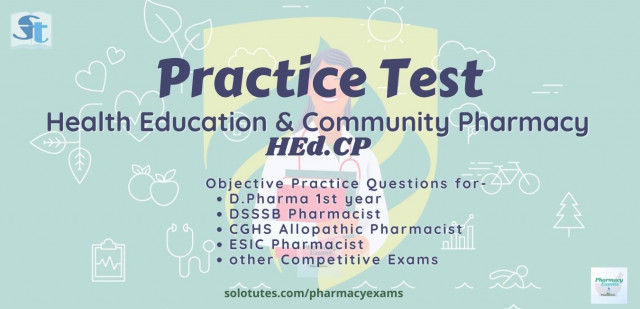
Health Education Practice Test #1 | H.E.C.P. MCQs for Pharmacy Exams
(20 Questions , 67 attempts)

Online Practice Test for Pharmacy exams, previous Year questions
(50 Questions , 2685 attempts)
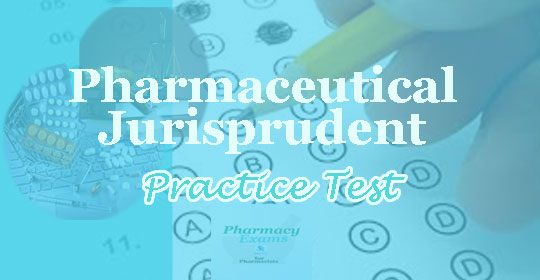
Pharmaceutical Jurisprudence Practice test #2 for Pharmacy Exams
(25 Questions , 454 attempts)
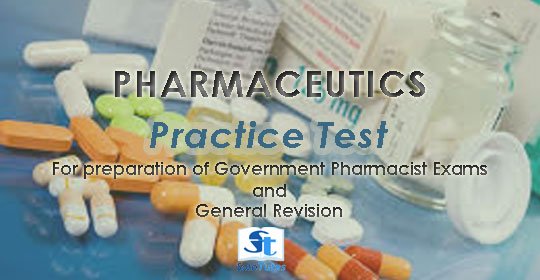
Pharmaceutics Practice Quiz (Aptitude test for Pharmacy exams)
(20 Questions , 664 attempts)
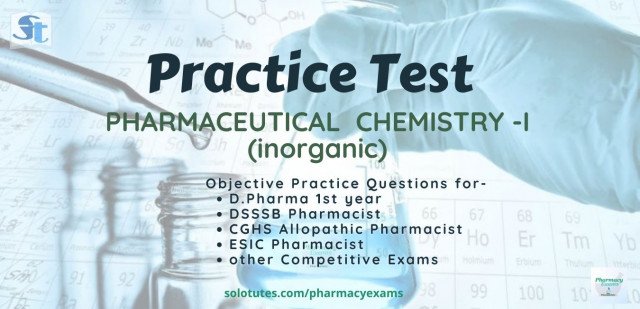
Practice Test Set #1 | Pharmaceutical Chemistry 1 (inorganic) MCQs
(30 Questions , 383 attempts)
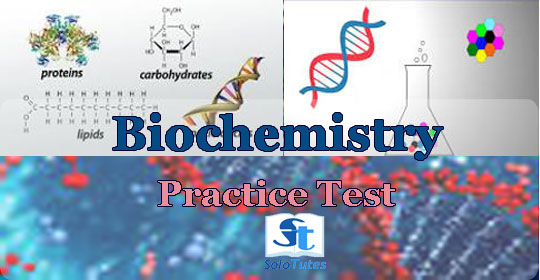
Biochemistry Practice Test 1 (For Pharmacy, paramedical and other entrance exams).
(25 Questions , 482 attempts)
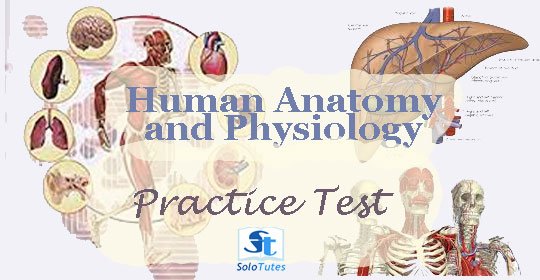
Practice test 1 (Human Anatomy and Physiology) for competitive exams
(25 Questions , 1093 attempts)

Practice Test for Pharmacy Exams (Pharmaceutical Jurisprudence)
(25 Questions , 1998 attempts)

Practice Test #2 | Pharmaceutics-II | MCQs for Pharmacy Exams
(30 Questions , 580 attempts)
.png)
